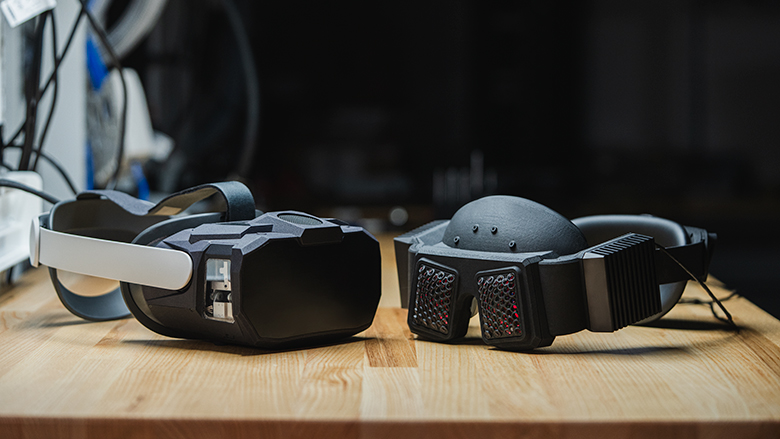
What you need to know
- Meta's Reality Labs is showing off two new XR headset prototypes at the SIGGRAPH 2023 conference this August.
- "Butterscotch Varifocal" is the first VR headset to achieve retinal resolution for 20/20 VR vision while also adjusting the screen's focus based on where your eyes look.
- "Flamera" uses a unique "light field passthrough" instead of traditional cameras to give you a more realistic look at your surroundings without any visual artifacts.
After every Meta earnings report showing billions in quarterly losses on Reality Labs R&D, it's easy to question what, exactly, Meta's XR engineers are working on that costs so much. At an upcoming tech conference in Los Angeles, Meta's team will show off new proofs of concept that may manifest in future Meta Quest VR headsets.
VR headsets like the Quest 2 have known limitations. Visuals are blurry, both because a wireless headset can't support high resolutions and because they have a set focal point of about three feet where things are clearest. Anything closer or further becomes increasingly out of focus, restricting where games focus their art direction and mechanics.
Butterscotch Varifocal, Reality Labs' first prototype, is the "first prototype headset to achieve varifocal with a retinal resolution display of roughly 60 pixels per degree (PPD), which is sufficient for 20/20 visual acuity," according to the Meta Quest blog.
Retinal-resolution varifocal allows you to see as clearly as your eyes allow. Meta shows off a VR example in the video below of Lone Echo II footage, but perhaps the more important benefit will be for mixed reality: it'll make text on your phone screen or computer monitor legible without having to find the right distance from your eyes.
While Butterscotch Varifocal sure sounds promising, the blog post notes that to achieve these next-gen specs, they had to make it a bulky form factor with a mere 50-degree FOV, on par with AR glasses. It'll take quite a while for this tech to be consumer-ready.
The second Reality Labs prototype, Flamera, is a mixed reality headset that looks like you slapped two red-tinted honeycombs onto your eyes. And it solves a problem that'll apply to the upcoming Meta Quest 3.
As the blog post explains, VR headsets' front cameras for passthrough sit a few inches from your actual eyes — both in terms of depth and angle — meaning the headset has to reproject your view to look realistic. This creates visual artifacts that make everything look off to your eyes.
With Flamera, they designed it to "directly capture the same rays of light that you’d see with your bare eyes," according to research scientist Grace Kuo. They had to place the cameras as close to the user's eyes as possible while moving other components further back on the glasses' design.
"High-quality passthrough lets us convincingly overlay digital content on our view of the physical world while leveraging the high-contrast, wide-field-of-view displays of VR headsets," says Kuo.
This blog post emphasized that consumer-ready versions of these prototypes are a long way off. But as Display Systems Research Director Douglas Lanman said in the post, their research focus lets them "consider what might be one day, rather than what needs to be right now," as product-focused teams have to.
Even if this technology doesn't make it into the Quest 4 or Quest Pro 2, VR fans can dream about future headsets that finally fix the blurry visuals we've grown accustomed to.







